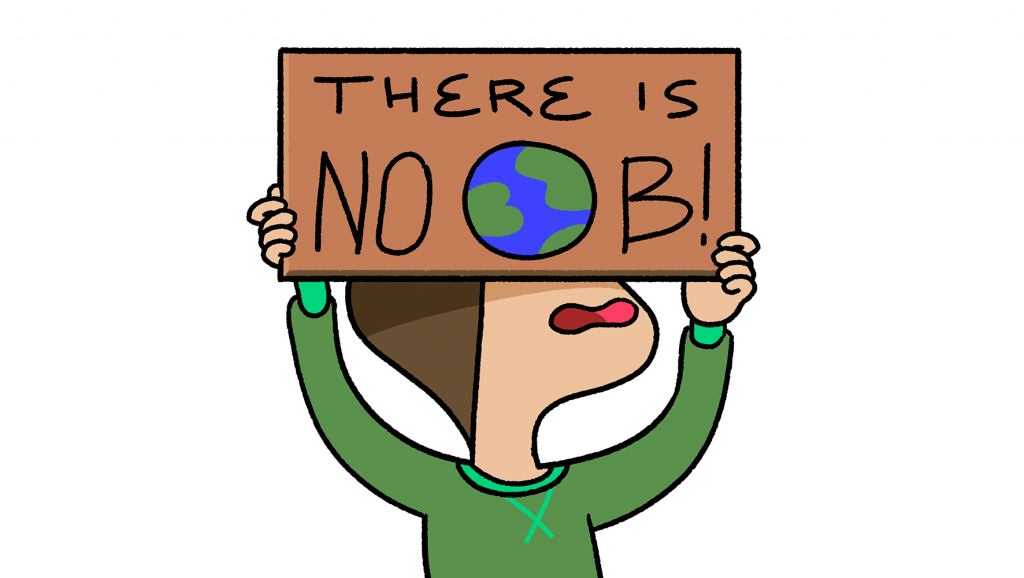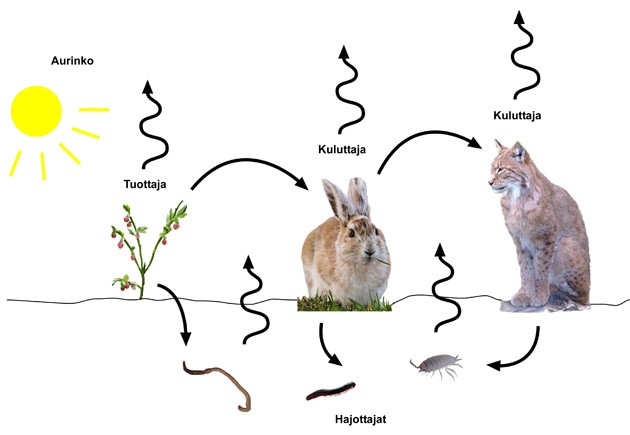
3. Inspirations
Young people who visit youth centres already know a lot about environmental issues. They have been talked about since primary school and have been widely featured in the media.
Environmental education in youth work makes it possible to enable the environmental knowledge learned in school to be perceived into one’s own life How
How does this relate to me? By participating in the youth centre’s environmental activities and discussions, young people can gain great insights into themselves as part of the entirety of life on Earth.
The role of the youth worker is to lead young people to reflect, discuss and become aware of the underlying meanings of actions that affect the environment. Often this happens through action.
A good basis for discussions with young people can be found in understanding the four life-sustaining processes presented in Maakasvatus – The Institute for Earth Education. It is important to ask how one should live in order for these processes to remain functional.
Four ecological processes:
The text is mainly based on the work of Steve van Matre (see the reading tip at the bottom of the page).
Energy flow

The sun is the source of the earth’s energy. Green plants convert the energy of sunlight into food. Herbivores absorb the same solar energy by eating plants. Carnivores, while eating other animals, also initially eat energy from the sun. When solar energy thus flows in the food chain, most of it is spent on the functioning and growth of each part of the chain. Most food chains contain a lot of plants, but fewer herbivores and even fewer carnivores.
Fossil fuels are also solar energy. They are plants or animals that have left the cycle. Fossil fuels are carbon stored by nature that we release back into the natural cycle. The problem is that we release it too much.
Circulation of matter
The basic building blocks of life are hydrogen, carbon, oxygen, nitrogen, phosphorus and sulfur. All animals, plants and even inanimate nature — actually everything on Earth — are made up of the same basic building materials. There are a limited number of these on Earth, so they are constantly being reused.
For millions of years, organisms have taken substances from soil, water and air and then returned them. From a human point of view, those substances have existed for eternity. The substance changes form. Plants get the nutrients they need to grow from the soil. Nutrients return to the soil after the organism dies. All organisms on Earth originate from the earth and return to the earth.
Water is the life fluid of the earth, which is recycled by the heat of the sun in its own enormous cycle. Water evaporates as water vapor from rivers, lakes and oceans. Water vapour rises into the sky and condenses into clouds, falling back to the ground as rain, snow, sleet or hail. Water can also go through organisms. Evaporation and soil filtration are important purifiers of the water cycle.
Part of the air around the earth is constantly being reused. Animals exhale the carbon dioxide that plants need to make sugar, and as a by-product, the oxygen that animals need is produced. In this way, the circulation of air guarantees the exchange of substances necessary for plants and animals to live.
3. Interactions
Some scientists estimate that there are about 11 million species on Earth. Many of them disappear before they are even identified. Each organism is the result of the combination of sunlight, air, water and soil, and each is unique.
Organisms form communities as well as habitats. In the community, each organism has its own function, its own ecological compartment. Organisms compete with each other for energy and matter, but they also cooperate a lot. Often they benefit each other by their existence and are thus connected to each other. Everything on Earth is, in some way, connected to everything else. No way of life could exist alone.
The flow of solar energy and the cycle of matter connect all living and non-living things. Sometimes this interaction is described as a network of life, with an organism at each junction of the strands. The organism is connected through threads to all other organisms in the network, and when it eventually dies, its building materials flow along the threads for use by other organisms. Humans themselves are a consortium of more than four billion interdependent microorganisms that, together, remain together.
4. Constant change
Life never stops. Over time, new life forms emerge whose characteristics and behaviours adapt to prevailing conditions. Continuity and sustainability of life are due to variation. Modification ensures that there is always some form of organism that benefits from changes in the environment. Everything on Earth is in a state of constant change. The life of plants and animals, as well as death, tides and winds, and the movements of the Earth’s interior tell of the ever-changing nature of the planet.
Sources:
van Matre, Steve: Maakasvatus… uusi alku
Rakennusalan kustantajat
Rak: Jyväskylä, 1998.
